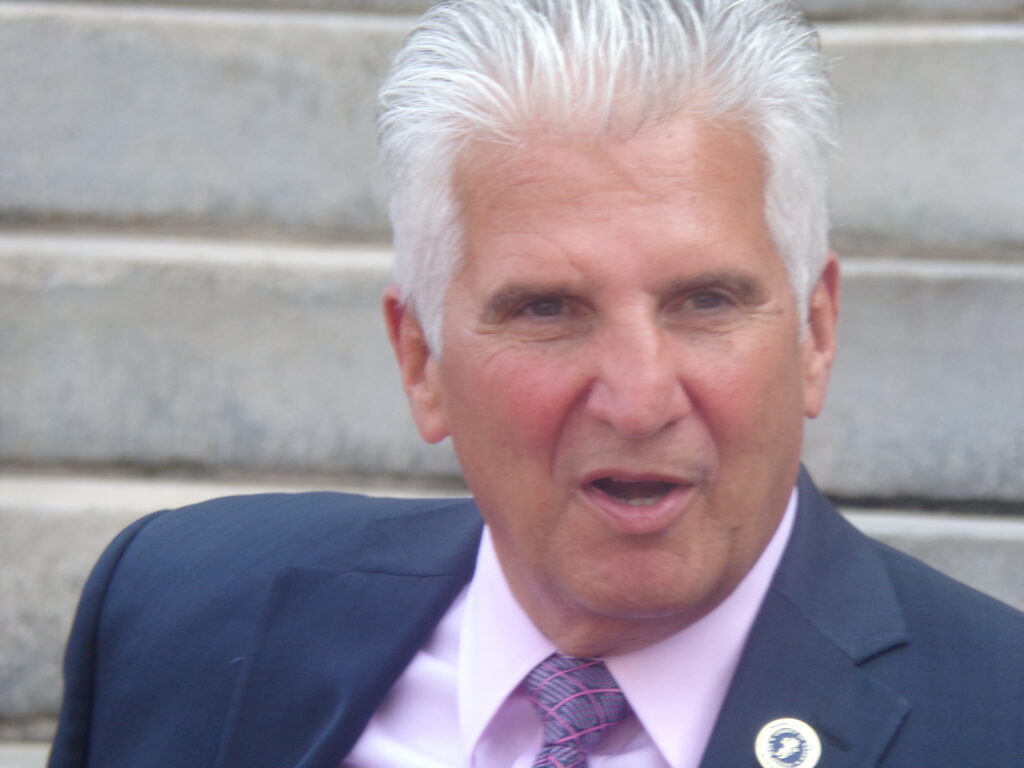North Dakota
Study: Biden drug policy could cost North Dakota jobs

(The Center Square) – North Dakota could lose up to 303 jobs tied to the biopharmaceutical industry if a proposed Biden administration drug pricing policy goes through, according to a study.
First included in President Biden’s 2024 budget and then moved forward under the SMART Prices Act, the bill would authorize Medicare to set prices for specific drugs five years after FDA approval.
If passed, it would mean 235 fewer FDA approvals of new medicines, including those for cancer, neurological issues, and infectious diseases, according to the study released by We Work for Health and Vital Transformation, whose clients include GlaxoSmithKline, Johnson and Johnson and Pfizer.
It would also lead to job losses across the U.S., including 50 to 78 direct biopharmaceutical industry jobs in North Dakota and up to 225 biopharma-supported jobs in the state, the study found.
Nationwide job losses would be between 146,000 and 223,000 for direct biopharmaceutical industry jobs and as many as 1.1 million jobs.
The Biden Administration says the policies would lower health care costs.
“The Act will cap prescription drug costs for tens of thousands of North Dakota Medicare beneficiaries, reduce health insurance premiums for tens of thousands of North Dakotans by about $960 per year on average while expanding coverage to about 6,000 North Dakotans, and cap insulin co-payments for the thousands of North Dakota Medicare beneficiaries that use insulin,” the Biden Administration said.
However, the study found the potential for widespread job losses and a drop in the number of new medicines developed and approved.
“Had the drug pricing provisions of the SPA been in place prior to the development of today’s top-selling medicines, we estimate that 82 of the 121 therapies we identified as selected for price setting would likely have not been developed,” said the researchers.
They went on to say the proposed federal government-mandated drug pricing policies would mean a loss of therapies and innovation.
”Impacts will be felt most heavily in many areas of unmet need, including in rare disease, oncology, neurology, and infectious disease,” the researchers said.

North Dakota
Port: Make families great again

MINOT — Gov.-elect Kelly Armstrong is roaring into office with some political capital to spend. I have some ideas for how to spend it during next year’s legislative session.
It’s a three-pronged plan focused on children. I’m calling it “Make Families Great Again.” I’m no marketing genius, but I have been a dad for 24 years. There are some things the state could do to help.
The first is school lunches. The state should pay for them. The Legislature had a rollicking debate about this during the 2023 session. The opponents, who liken this to a handout, largely won the debate. Armstrong could put some muscle behind a new initiative to have the state take over payments. The social media gadflies might not like it, but it would prove deeply popular with the general public, especially if we neutralize the “handout” argument by reframing the debate.
North Dakota families are obligated to send their children to school. The kids have to eat. The lunch bills add up. I have two kids in public school. In the 2023-2024 school year, I paid $1,501.65 for lunches. That’s more than I pay in income taxes.
How much would it cost? In the 2023 session,
House Bill 1491
would have appropriated $89.5 million to cover the cost. The price tag would likely be similar now, but don’t consider it an expense so much as putting nearly $90 million back in the pockets of families with school-age children. A demographic that, thanks to inflation and other factors, could use some help.
Speaking of helping, the second plank of this plan is child care. This burgeoning cost is not just a millstone around young families’ necks but also hurts our state’s economy. We have a chronic workforce shortage, yet many North Dakotans are held out of the workforce because they either cannot find child care or because the care available is prohibitively expensive.
State leaders haven’t exactly been sitting on their hands. During the 2023 session, Gov. Doug Burgum signed
a $66 million child care package
focusing on assistance and incentives. We should do something bolder.
Maybe a direct tax credit to cover at least some of the expenses?
The last plank is getting vaccination rates back on track.
According to data from the state Department of Health,
the kindergarten-age vaccination rate for chicken pox declined 3.76% from the 2019-2020 school year. The rate for the measles, mumps and rubella vaccine is down 3.72%, polio vaccines 3.54%, hepatitis B vaccines 2.27%, and the vaccine for diphtheria, tetanus and pertussis 3.91%.
Meanwhile, personal and religious exemptions for kindergarten students have risen by nearly 69%.
This may be politically risky for Armstrong. Anti-vaxx crankery is on the rise among Republicans, but, again, Armstrong has some political capital to spend. This would be a helpful place for it. A campaign to turn vaccine rates around would help protect the kids from diseases that haven’t been a concern in generations. It would help address workforce needs as well.
When a sick kid can’t go to school or day care, parents can’t go to work.
These ideas are practical and bold and would do a great deal to help North Dakota families.
North Dakota
North Dakota 77-73 Loyola Marymount (Nov 22, 2024) Game Recap – ESPN

LOS ANGELES — — Treysen Eaglestaff had 23 points in North Dakota’s 77-73 win over Loyola Marymount on Friday night.
Eaglestaff also contributed five rebounds for the Fightin’ Hawks (3-2). Mier Panoam scored 16 points and added seven rebounds. Dariyus Woodson had 12 points.
The Lions (1-3) were led in scoring by Caleb Stone-Carrawell with 17 points. Alex Merkviladze added 16 points, eight rebounds, four assists and two steals. Will Johnston had 15 points and four assists.
North Dakota went into the half ahead of Loyola Marymount 36-32. Eaglestaff led North Dakota with 12 second-half points.
——
The Associated Press created this story using technology provided by Data Skrive and data from Sportradar.
North Dakota
National monument proposed for North Dakota Badlands, with tribes' support

BISMARCK, N.D. — A coalition of conservation groups and Native American tribal citizens on Friday called on President Joe Biden to designate nearly 140,000 acres of rugged, scenic Badlands as North Dakota’s first national monument, a proposal several tribal nations say would preserve the area’s indigenous and cultural heritage.
The proposed Maah Daah Hey National Monument would encompass 11 noncontiguous, newly designated units totaling 139,729 acres (56,546 hectares) in the Little Missouri National Grassland. The proposed units would hug the popular recreation trail of the same name and neighbor Theodore Roosevelt National Park, named for the 26th president who ranched and roamed in the Badlands as a young man in the 1880s.
“When you tell the story of landscape, you have to tell the story of people,” said Michael Barthelemy, an enrolled member of the Mandan, Hidatsa and Arikara Nation and director of Native American studies at Nueta Hidatsa Sahnish College. “You have to tell the story of the people that first inhabited those places and the symbiotic relationship between the people and the landscape, how the people worked to shape the land and how the land worked to shape the people.”
The National Park Service oversees national monuments, which are similar to national parks and usually designated by the president to protect the landscape’s features.
Supporters have traveled twice to Washington to meet with White House, Interior Department, Forest Service and Department of Agriculture officials. But the effort faces an uphill battle with less than two months remaining in Biden’s term and potential headwinds in President-elect Donald Trump ‘s incoming administration.
If unsuccessful, the group would turn to the Trump administration “because we believe this is a good idea regardless of who’s president,” Dakota Resource Council Executive Director Scott Skokos said.
Dozens if not hundreds of oil and natural gas wells dot the landscape where the proposed monument would span, according to the supporters’ map. But the proposed units have no oil and gas leases, private inholdings or surface occupancy, and no grazing leases would be removed, said North Dakota Wildlife Federation Executive Director John Bradley.
This undated image provided by Jim Fuglie shows Bullion Butte in western North Dakota. Credit: AP/Jim Fuglie
The proposal is supported by the MHA Nation, the Spirit Lake Tribe and the Standing Rock Sioux Tribe through council resolutions.
If created, the monument would help tribal citizens stay connected to their identity, said Democratic state Rep. Lisa Finley-DeVille, an MHA Nation enrolled member.
North Dakota Gov. Doug Burgum is President-elect Donald Trump’s pick to lead the Interior Department, which oversees the National Park Service, including national monuments. In a written statement, Burgum said: “North Dakota is proof that we can protect our precious parks, cultural heritage and natural resources AND responsibly develop our vast energy resources.”
North Dakota Sen. John Hoeven’s office said Friday was the first they had heard of the proposal, “but any effort that would make it harder for ranchers to operate and that could restrict multiple use, including energy development, is going to raise concerns with Senator Hoeven.”
-
Business1 week ago
Column: OpenAI just scored a huge victory in a copyright case … or did it?
-

 Health1 week ago
Health1 week agoBird flu leaves teen in critical condition after country's first reported case
-

 Business6 days ago
Business6 days agoColumn: Molly White's message for journalists going freelance — be ready for the pitfalls
-

 Science3 days ago
Science3 days agoTrump nominates Dr. Oz to head Medicare and Medicaid and help take on 'illness industrial complex'
-

 Politics5 days ago
Politics5 days agoTrump taps FCC member Brendan Carr to lead agency: 'Warrior for Free Speech'
-
/cdn.vox-cdn.com/uploads/chorus_asset/file/25739950/247386_Elon_Musk_Open_AI_CVirginia.jpg)
/cdn.vox-cdn.com/uploads/chorus_asset/file/25739950/247386_Elon_Musk_Open_AI_CVirginia.jpg) Technology5 days ago
Technology5 days agoInside Elon Musk’s messy breakup with OpenAI
-

 Lifestyle6 days ago
Lifestyle6 days agoSome in the U.S. farm industry are alarmed by Trump's embrace of RFK Jr. and tariffs
-

 World5 days ago
World5 days agoProtesters in Slovakia rally against Robert Fico’s populist government




















